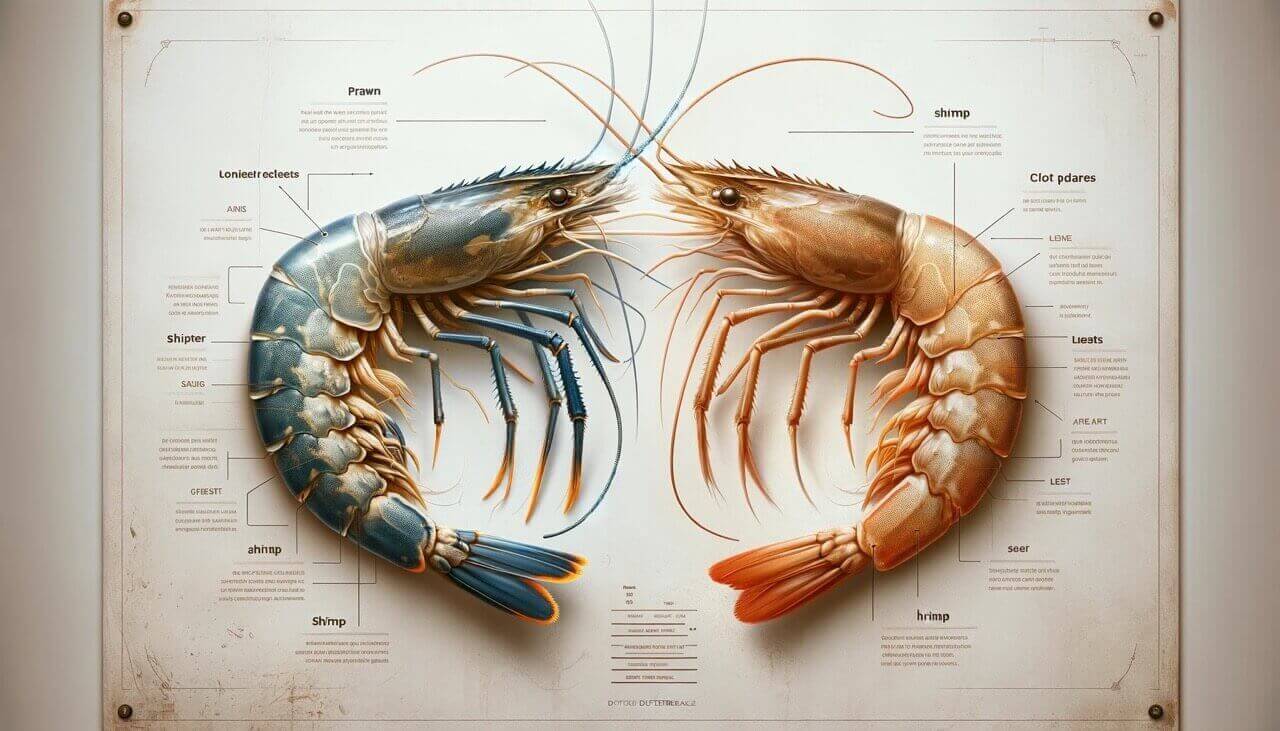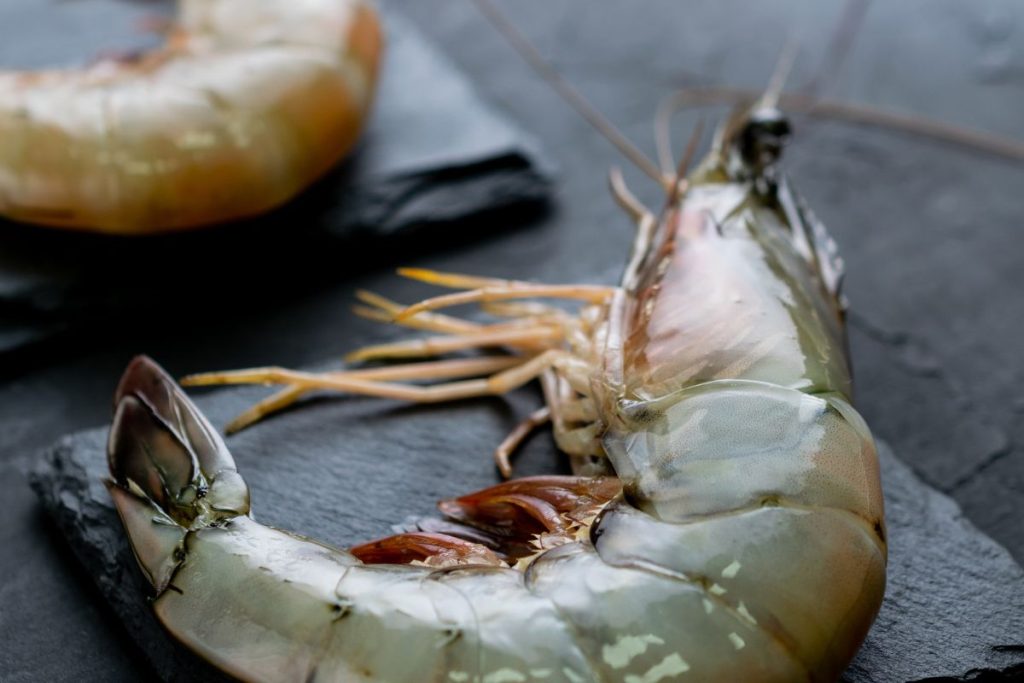In the world of gastronomy, the distinction between shrimp and prawn often causes confusion. Although both shellfish share similarities in their appearance and taste, there have differences. These differences influence their classification and culinary use.
In this article, we will share the distinctive characteristics of Argentine red shrimp and prawn. Also, their habitat, capture methods, and how each is marketed. Keep reading to discover all the details about these two types of shellfish!
Morphological characteristics of shrimp
The shrimp, an exquisite crustacean belonging to the Penaeidae family (Penaeidae), has unique features. These characteristics differentiate it not only from its close relatives, such as prawns, but also from other shellfish. Although there are different varieties of shrimp, the Argentinian red prawn has more popularity for its quality, flavor and characteristics. These shrimps live and can be found in the South Atlantic Ocean, particularly off the coast of Argentina.
In terms of size and shape, shrimp stand out with an impressive length, reaching up to 25 centimeters. Their elongated and slender body, with a more pronounced abdomen and typically a larger tail, gives a unique elegance to this crustacean.
The color palette displayed by shrimp is another distinctive feature. While their coloration may vary, they usually exhibit shades ranging from gray to pink. Occasionally, with more intense tones on the dorsal area.
The shrimp’s shell is a crucial element in its identification. Sturdier and rougher than that of prawns, it provides protection and resistance. Strong and developed pincers, as well as longer antennae, are other distinctive features defining the morphology of this crustacean.
Morphological characteristics of prawn:
The prawn, another coveted player in global gastronomy, is generally smaller than the Argentine red shrimp. In fact, it has a compact body ranging from 10 to 20 centimeters in length, with a proportionally shorter tail.
Regarding the color palette of prawns, it includes shades from grays and browns to more pinkish tones. Their translucent appearance adds a touch of visual elegance that distinguishes them on any plate.
The shell, thinner and smoother than that of other crustaceans, contributes to the unique culinary experience of prawns. Unlike shrimp, their shell lacks the characteristic roughness, providing a more delicate texture to the palate.
The pincers and antennae of prawns, although present, are less prominent than those of Argentine red shrimp.
Habitat of Argentine red shrimp and prawn
While both Argentine red shrimp and prawns share a preference for saline fresh waters, there are differences.
Argentine red shrimp typically inhabit deeper and colder waters. For instance, shrimps live and can be found in the North Atlantic Ocean and parts of the Pacific Ocean. They prefer areas with rocky, sandy, or muddy bottoms and are known to migrate in large groups in search of food. Prawns live and can be found in the Mediterranean Sea and other coastal waters.
On the other hand, prawns can be found in a variety of aquatic habitats, from coastal waters to deeper zones. They usually inhabit sandy or muddy seafloors and can be found in temperate and tropical waters around the world. They are common in areas such as the Gulf of Mexico, the North Sea, the South Atlantic Ocean, and the Indian Ocean.
Capture methods
The capture of shrimps and prawns is commonly carried out using fishing methods. For instance, It is used as bottom trawling, where a net is towed along the seafloor. This is one of the most commonly used methods.
Although, its environmental impact can be negative due to bycatch or damage to marine habitat.
Other capture methods commonly used include gillnets. These allow the release of unwanted organisms, and traps or pots. These are used to attract crustaceans with bait and secure their capture once they enter.
Marketing of Argentine red shrimp and prawn: Do they differ?
Both Argentine red shrimp and prawns are usually sold in various forms, including fresh, frozen, cooked, raw, peeled, or whole. The product presentation can influence its price and demand in the market. The fishing industry and regulations can also affect marketing. Especially, if sustainable practices are implemented, and certifications supporting the quality and origin of the products are sought.
At Krustagroup, we market Australian Argentine red shrimp in different formats. Check out our seafood catalog.
Applications and uses of the product
The versatility of Argentine red shrimp and prawns allows for their use in a wide range of dishes. For instance, they are used on seafood platters, salads, pasta and rice dishes, sushi, soups, creams, tapas, and appetizers. They are also ideal for consumption alone, cooked, grilled, or sautéed.
Argentine red shrimp and prawns are two gems in gastronomy. From their starring roles in gourmet dishes to their presence in everyday cooking, they have constant demand in the food market. However, at KrustaGroup, we believe it is essential to emphasize the importance of sustainable fishing and responsible practices. This is done to preserve the oceans and ensure the availability of these exquisite products on future tables.





